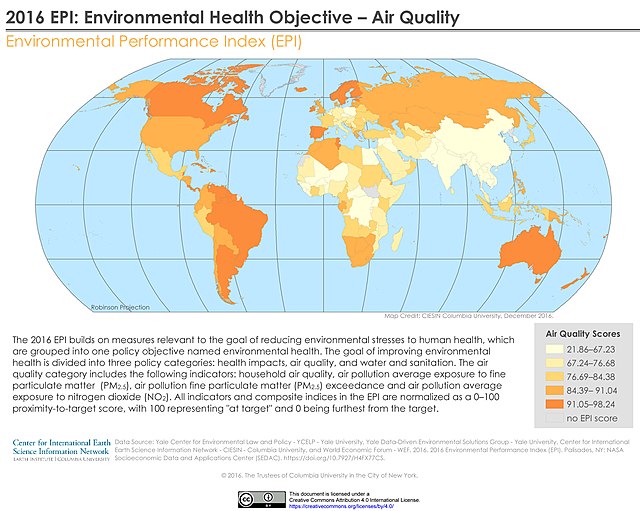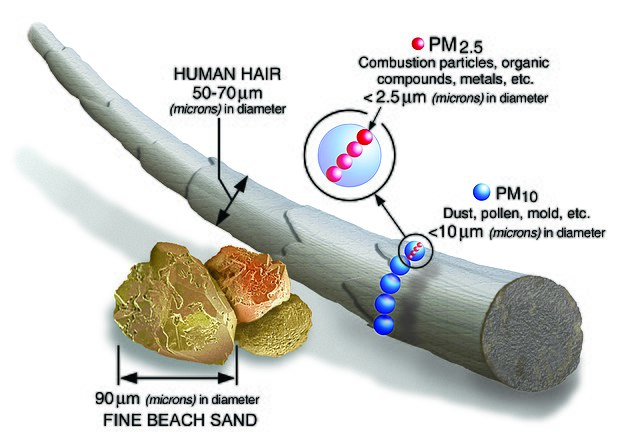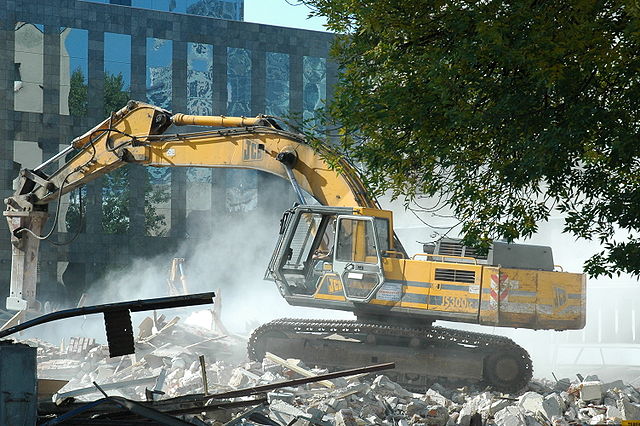Air pollution is the contamination of air due to the presence of substances called pollutants in the atmosphere that are harmful to the health of humans and other living beings, or cause damage to the climate or to materials. It is also the contamination of the indoor or outdoor environment either by chemical, physical, or biological agents that alters the natural features of the atmosphere. There are many different types of air pollutants, such as gases, particulates, and biological molecules. Air pollution can cause diseases, allergies, and even death to humans; it can also cause harm to other living organisms such as animals and crops, and may damage the natural environment or built environment. Air pollution can be caused by both human activities and natural phenomena.
Air pollution from a coking oven
2016 Environmental Performance Index – darker colors indicate lower concentrations of fine particulate matter and nitrogen dioxide, as well as better indoor air quality.
Controlled burning of a field outside of Statesboro, Georgia, US, in preparation for spring planting
Smoking of fish over an open fire in Ghana, 2018
Particulates or atmospheric particulate matter are microscopic particles of solid or liquid matter suspended in the air. The term aerosol commonly refers to the particulate/air mixture, as opposed to the particulate matter alone. Sources of particulate matter can be natural or anthropogenic. They have impacts on climate and precipitation that adversely affect human health, in ways additional to direct inhalation.
PM2.5 and PM10 compared with a human hair in a graphic from the Environmental Protection Agency
Excavator (a type of heavy equipment commonly used at construction sites and roadworks) demolishing the remnants of the pre-war Postal Train 0880Station (Dworzec Pocztowy) at Jerozolimskie Avenue, Poland
Particulates in the air causing shades of orange, yellow, pink, and grey in Mumbai during sunset
Air pollution measurement station in Emden, Germany








